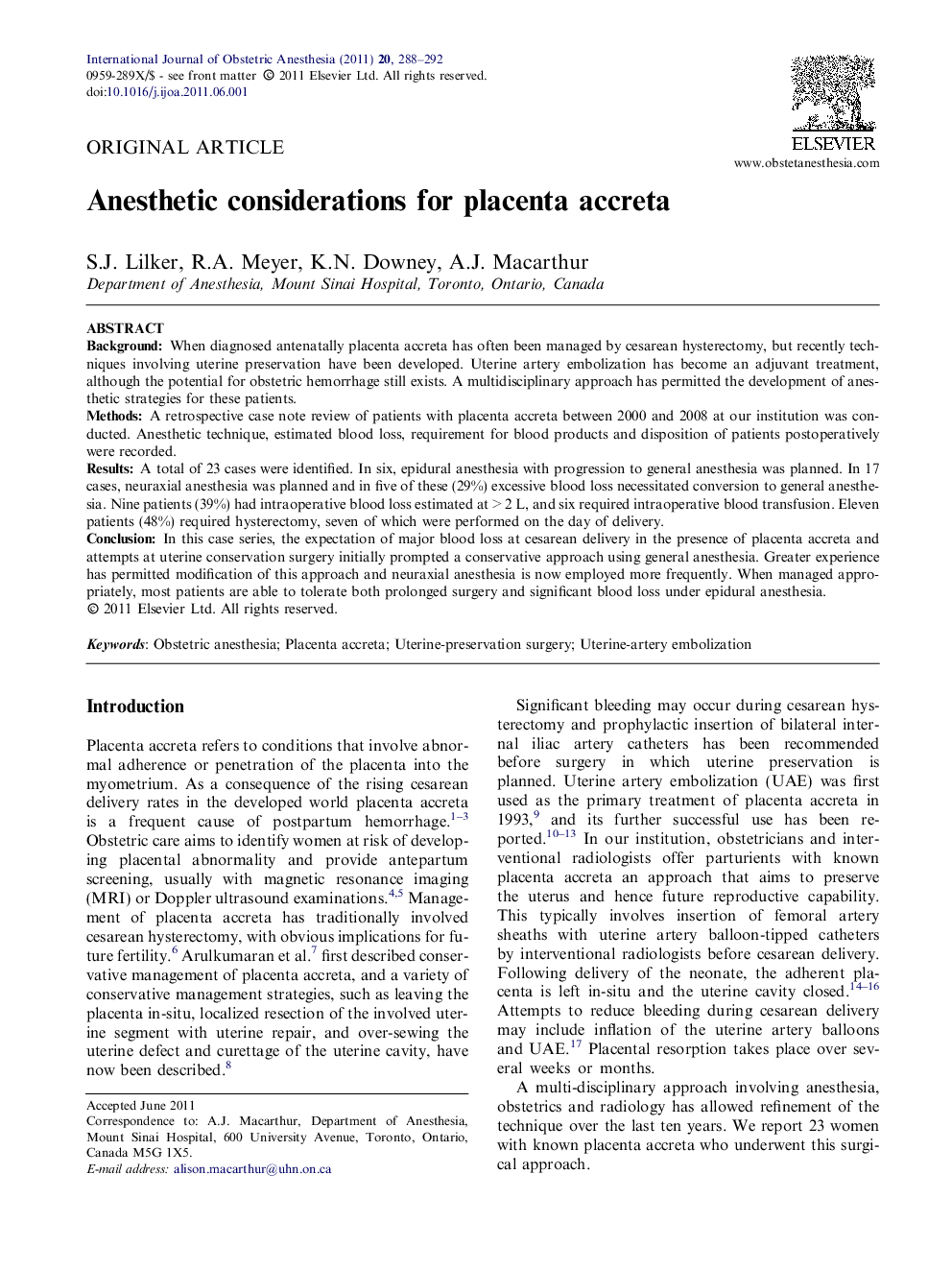| Article ID | Journal | Published Year | Pages | File Type |
|---|---|---|---|---|
| 2757658 | International Journal of Obstetric Anesthesia | 2011 | 5 Pages |
BackgroundWhen diagnosed antenatally placenta accreta has often been managed by cesarean hysterectomy, but recently techniques involving uterine preservation have been developed. Uterine artery embolization has become an adjuvant treatment, although the potential for obstetric hemorrhage still exists. A multidisciplinary approach has permitted the development of anesthetic strategies for these patients.MethodsA retrospective case note review of patients with placenta accreta between 2000 and 2008 at our institution was conducted. Anesthetic technique, estimated blood loss, requirement for blood products and disposition of patients postoperatively were recorded.ResultsA total of 23 cases were identified. In six, epidural anesthesia with progression to general anesthesia was planned. In 17 cases, neuraxial anesthesia was planned and in five of these (29%) excessive blood loss necessitated conversion to general anesthesia. Nine patients (39%) had intraoperative blood loss estimated at > 2 L, and six required intraoperative blood transfusion. Eleven patients (48%) required hysterectomy, seven of which were performed on the day of delivery.ConclusionIn this case series, the expectation of major blood loss at cesarean delivery in the presence of placenta accreta and attempts at uterine conservation surgery initially prompted a conservative approach using general anesthesia. Greater experience has permitted modification of this approach and neuraxial anesthesia is now employed more frequently. When managed appropriately, most patients are able to tolerate both prolonged surgery and significant blood loss under epidural anesthesia.
